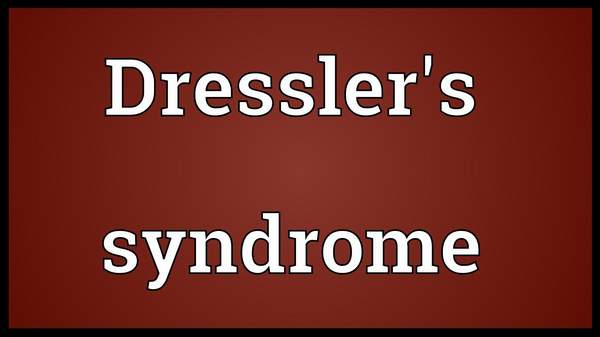What's in this article?
Dressler’s syndrome is a type of pericarditis inflammation of the sac surrounding the heart (pericardium). Dressler’s syndrome is believed to be an immune system response after damage to heart tissue or to the pericardium, from events such as a heart attack, surgery or traumatic injury. Symptoms include chest pain, which may be similar to chest pain experienced during a heart attack.
Dressler’s syndrome may also be called postpericardiotomy syndrome, post-myocardial infarction syndrome and post-cardiac injury syndrome. With recent improvements in heart attack treatment, Dressler’s syndrome is less common than it used to be.
Symptoms
Symptoms include:
- Anxiety
- Chest pain from the swollen pericardium rubbing on the heart. The pain may be sharp, tight or crushing and may move to the neck, shoulder, or abdomen. The pain may also be worse when you breathe and go away when you lean forward, stand, or sit up.
- Trouble breathing
- Dry cough
- Fast heart rate (tachycardia)
- Fatigue
- Fever (more common with the second type of pericarditis)
- Malaise (general ill feeling)
- Splinting of ribs (bending over or holding the chest) with deep breathing
Causes
Dressler’s syndrome is associated with an immune system response to heart damage. Your body reacts to the injured tissue by sending immune cells and proteins (antibodies) to clean up and repair the affected area. Sometimes this response causes excessive inflammation in the pericardium.
Postpericardiotomy syndrome might affect 10 to 40 percent of people who have had heart surgery.
Treatment
The goal of treatment is to make the heart work better and reduce pain and other symptoms.
Nonsteroidal anti-inflammatory medications (NSAIDs) or aspirin may be used to treat inflammation of the pericardium. A drug called colchicine is often used with these medicines.
Steroids are commonly used for Dressler’s syndrome. They are not often used for early pericarditis unless the condition does not respond to other treatment.
In some cases, excess fluid surrounding the heart (pericardial effusion) may need to be removed. This is done with a procedure called pericardiocentesis. If complications develop, part of the pericardium may need to be removed with surgery (pericardiectomy).





